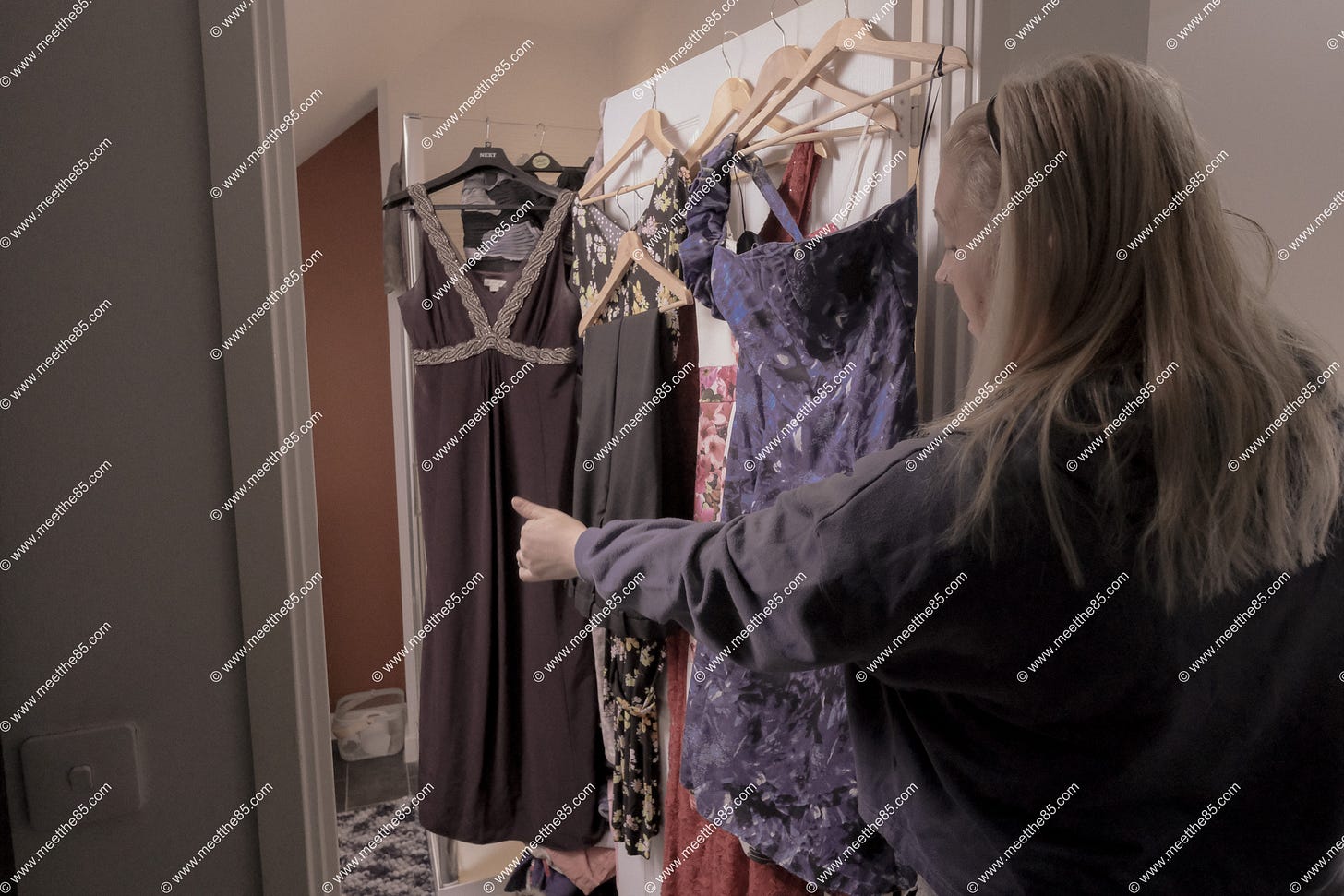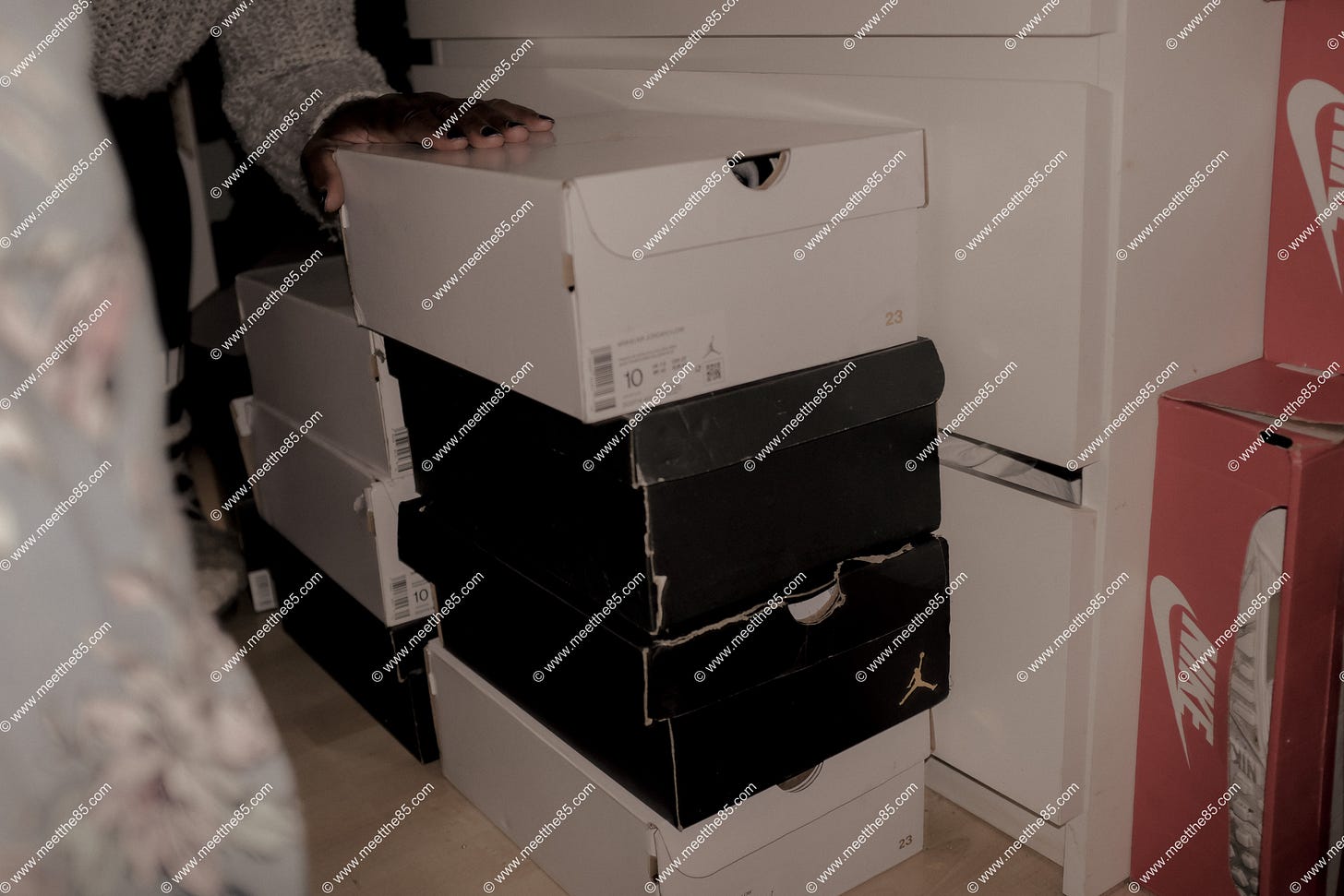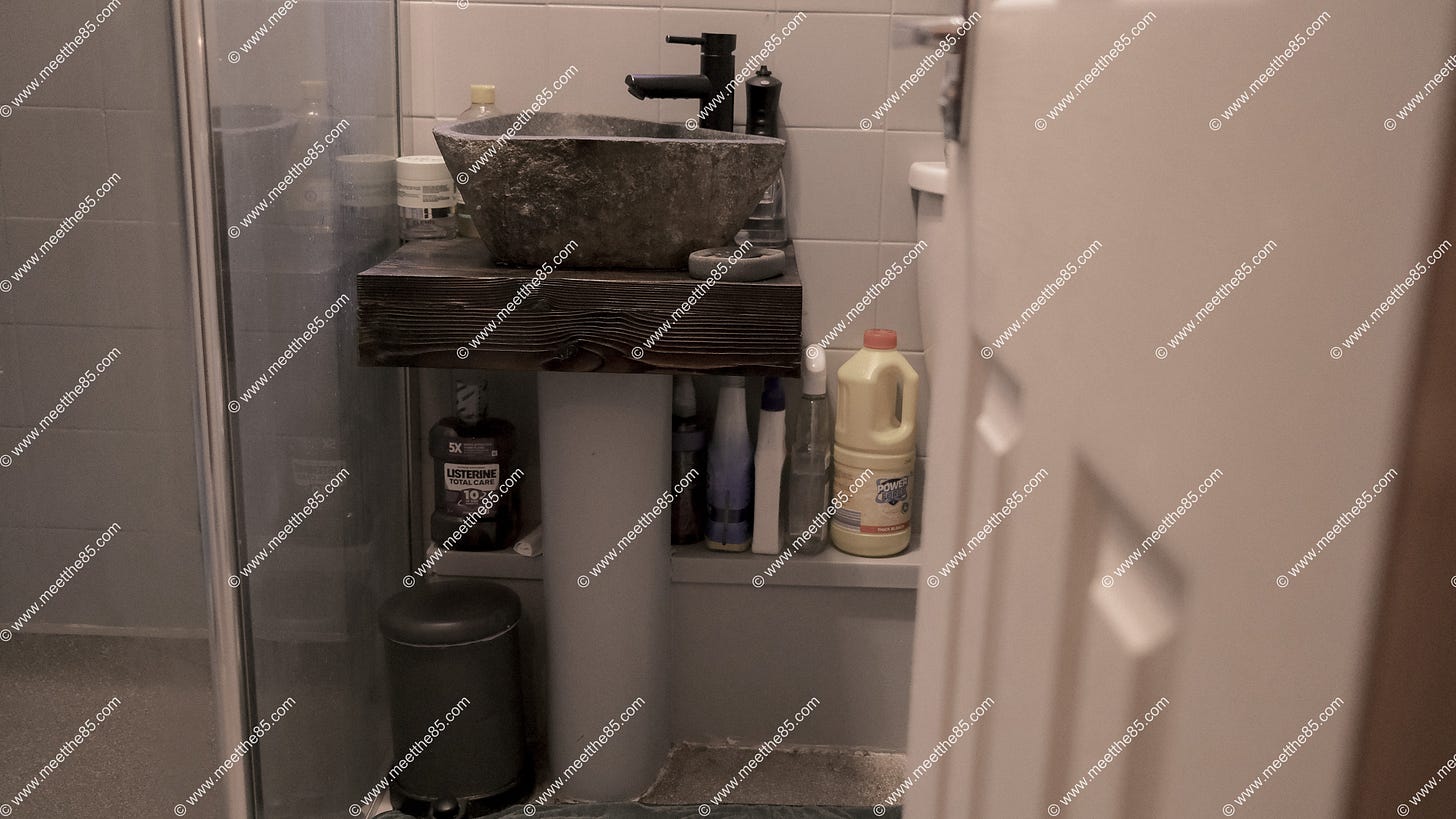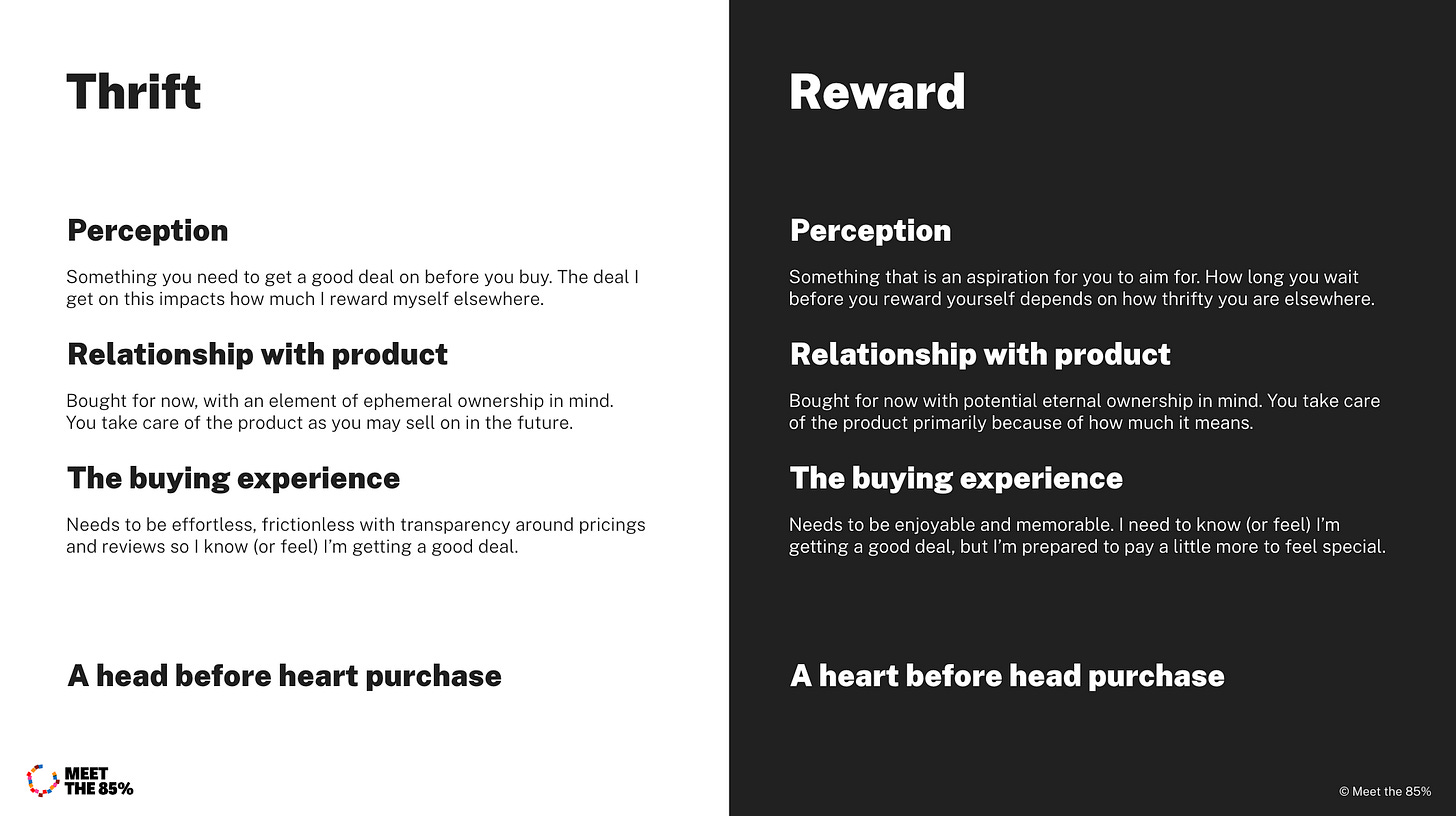Recently we met with Kyle.
It was a general, wide ranging conversation with him and one we enjoyed.
We touched on lots of different areas of conversation - from his job to his passions, his thoughts about the Tories, living with ADHD, his views on friendship and his eating habits and more.
One thread that permeated the entire visit was thrift. And the thrift economy is something we’re seeing that’s changing, evolving, and encompassing different people in different ways.
THRIFT IS IN THE EYE OF THE BEHOLDER
Over the past year or so we’ve met people ranging from those in social housing with mattresses on the floor for their children, to recent retirees whose pensions have instantly become less secure due to inflation, to High Net Worth Individuals who are using Vinted more and more - and for specific reasons. (And we’ve met loads of people ‘in between’ - the amorphous mass of people ‘in the middle’).
The people we’re meeting each have their own view on how they can be ‘savvy’ and ‘make their money go further’ so that they can still do what they want in life, without making big sacrifices.
For lots of people in the UK at the moment, it may be ‘eating or heating’ but for lots of others it’s ‘thrift equals rewards’ - huge swathes of the country being savvy with their money not for survival, but so they can afford and justify the things in life they believe they deserve.
KYLE THE BUDGET KING
Kyle is a great example of thrift being in the eye of the beholder. He’s making changes he feels comfortable with, that positively impact his finances, so he can live the life he wants.
He’s going as far as is comfortable to be savvy. To make smart choices.
Like lots of people we’ve visited, we spotted Kyle had a ‘Vinted Corner’ - a part of the home where clothes were hanging, items were boxed up. A mini processing-factory within the home to sell goods. Here are some others we’ve spotted on our travels:


When we were visiting Kyle, an Amazon package was delivered. He told us it was a Blink camera that he’d bought to keep an eye on his new car.
Listen to how he talks about Vinted, and how he talks about his new Blink purchase…
His use of Vinted has changed as “nothing’s really selling” and the new tax regulations around using it have changed… “if you dare sell your second hand hat you have to give Rishi money…”
His thoughts around his new delivery are interesting too:
“Never pay full price for Blink”
What does that mean for the price elasticity of not only Blink but Amazon-owned products in his mind? In his mind anything owned by Amazon should only be bought when it’s on sale. That’s not a good place to be as a brand.
WHAT DOES THRIFT MEAN FOR SUSTAINABILITY?
We’re told that people of Kyle’s generation (Kyle called himself a millennial when we visited him) are more likely to buy sustainable products.
What we’re finding on our travels is nuanced and interesting. And again Kyle captures it pretty well.
There’s a sense that “being sustainable is a financial privilege”, and that we shouldn’t judge others if they aren’t being as sustainable as others. But ‘we should do what we can do.’
We’ve encountered countless people with similar beliefs - across ages, genders, ethnicities, locations. Lots of people who claim sustainability beliefs, who we then observe and their behaviours and their products somewhat contradict their claims.
But in his own words Kyle says he “can afford” to be sustainable to a degree - and in his bathroom we see the soap and glass-bottled toothpaste he mentions.
IS YOUR BRAND ON THE THRIFT SIDE OR THE REWARD SIDE?
In our mind the two things above are inextricably linked.
Thrift and Reward.
Kyle is being thrifty - in a way that isn’t too onerous or disruptive to his life (and in a way that gives him a buzz when he gets a sale) - so he can achieve the things he wants to achieve financially. With an example of him buying the brands he prefers, and the sustainable products he prefers. His reward for being thrifty.
The question if you’re a brand is:
Are you on the thrift side of his life (something that has a lower perceived value, ephemeral, something he’s happy to sell on?) or are you on the rewards side (something he aspires to own, sees as a reward, has positive emotional meanings attached to it)?
… or, is it possible to be both?
And, in turn, what does that mean for your brand perception, returns policy, price elasticity, packaging, store experience?
Some speculations:





